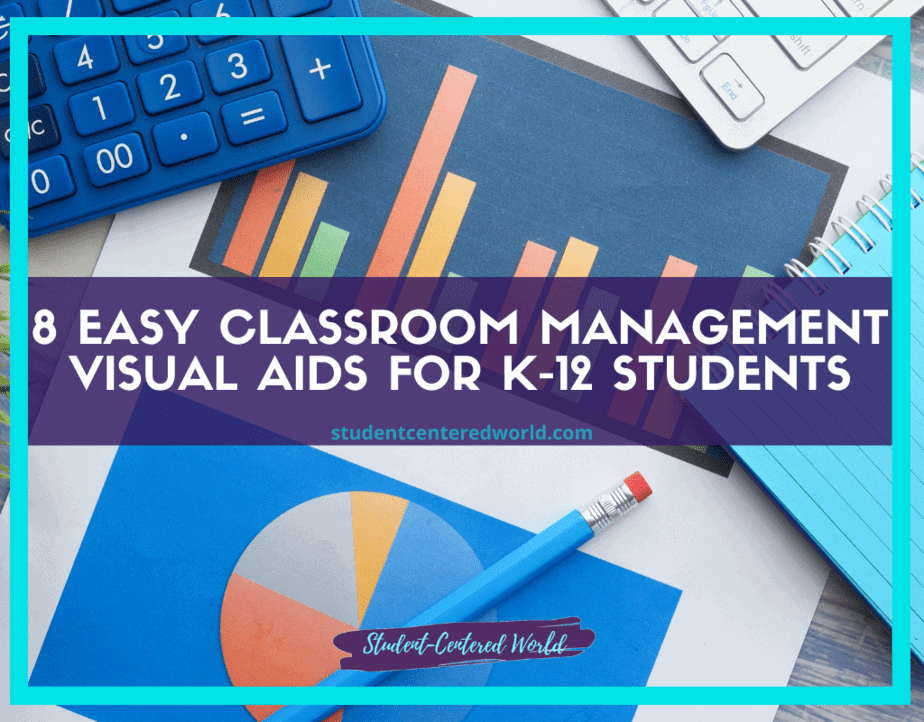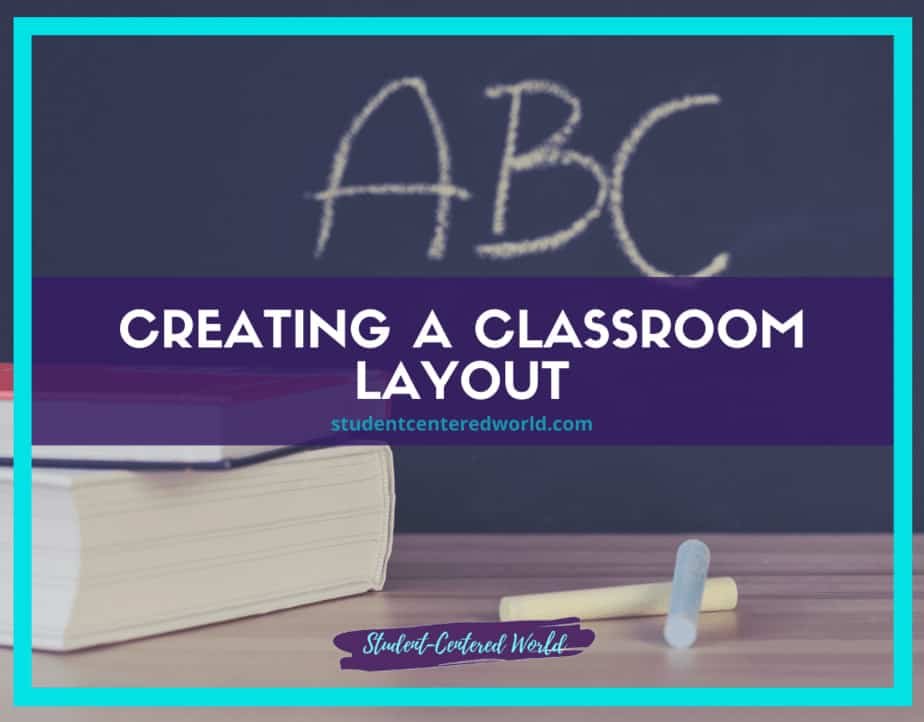4 Quick Recovery Tactics for Classroom Management Mistakes in K-12
There are times you can visibly see teachers start to sweat when they realize they have made classroom management mistakes. Listen, we’ve all been there…no matter how dedicated, seasoned, or knowledgable we are. Classroom management mistakes happen to the best of us and it’s truly all about how you respond to them that makes all the difference in the world.
Why Classroom Management Mistakes Happen
Classroom management is difficult for several reasons. You are essentially managing human beings, who can be unruly and unpredictable at times. Behavior is often contextual with many external factors that may influence behavior (i.e., siblings, home issues, etc.). And teaching itself is one of the most difficult jobs there is with long hours and loads of paperwork.
Sometimes a strategy seems very applicable in our minds, then when we put it into practice, it’s a disaster…and that’s okay!
Again, it’s more about how you react when classroom management mistakes happen rather than feeling defeated because they did.
Relating it back to what you can see teachers do when they realize a classroom management mistake has been made, the three most common reactions I have noticed are:
- Blame – The teacher puts blame on something or someone for the student’s misbehavior. This often involves claiming that “some students just don’t care.”
- Proceed as if everything is fine – The teacher fails to acknowledge the misbehavior and continues on as though it didn’t happen. For example, a student gets up several times and moves around the classroom during independent work time. Upon noticing this, the teacher may say something like: “It’s so nice we all have iPads now…let’s get back to work.”
- Come down on the student – The teacher uses some type of punitive consequence such as sending an offending student out of the room.
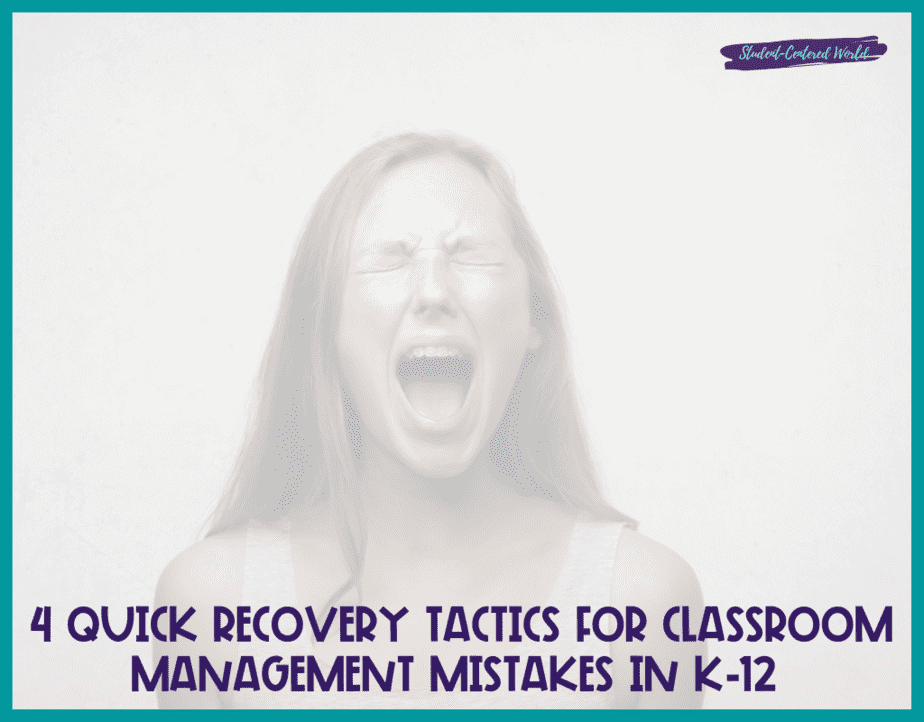
How Not To React When Classroom Management Mistakes Are Made: Blame
When you put blame on someone or something for misbehavior, you are missing out on several opportunities that may help you prevent it from happening again.
When you blame a student for bad behavior, the student may feel attacked and become even more defensive, thus creating a negative relationship between you and the student. And if your relationship with students is already rocky because of class size, behavior levels, and other factors, then chances are your relationship will not improve.
Regardless of the misbehavior that has occurred, creating a safe and supportive learning environment is paramount to preventing future classroom management mistakes. And as such, blaming students (or yourself) does not create this type of environment.
When you put blame on something or someone for misbehavior, then you lose an opportunity to engage students in conversations about what they could do differently next time. Conversations like these are more powerful than punitive consequences because it gives students the power to regulate themselves and take responsibility for their behavior.
How Not To React When Classroom Management Mistakes Are Made: Proceeding as if Everything is Fine
I believe we were all taught as students to “fake it till you make it.” I am not talking about faking confidence, but rather putting on a positive face of sorts and pretending like everything is fine even if you are feeling overwhelmed or frustrated.
Making the conscious effort to try and appear calm and collected in front of your students may be beneficial in the short run, but it doesn’t help you to understand the misbehavior or prevent it from happening again.
So when you ignore behavior that bothers you, it’s not because misbehavior never happens, but rather that it happens so often that you are desensitized to the severity of the situation.
If you are finding that you are desensitized to certain behavior or misbehavior, then it may be time for an intervention. This doesn’t mean that the student has “bad” behavior; it just means that any behavior can become unproductive if not addressed properly. If the same issues continue to reoccur even after interventions, then it may be an indicator that it is time to seek further help from a counselor, administrator, etc.
However, pretending that the action didn’t or isn’t happening is only going to make things worse in the long run. Ignoring something small once might be okay, but repeated offenses need to be dealt with before it turns into an out-of-control situation.
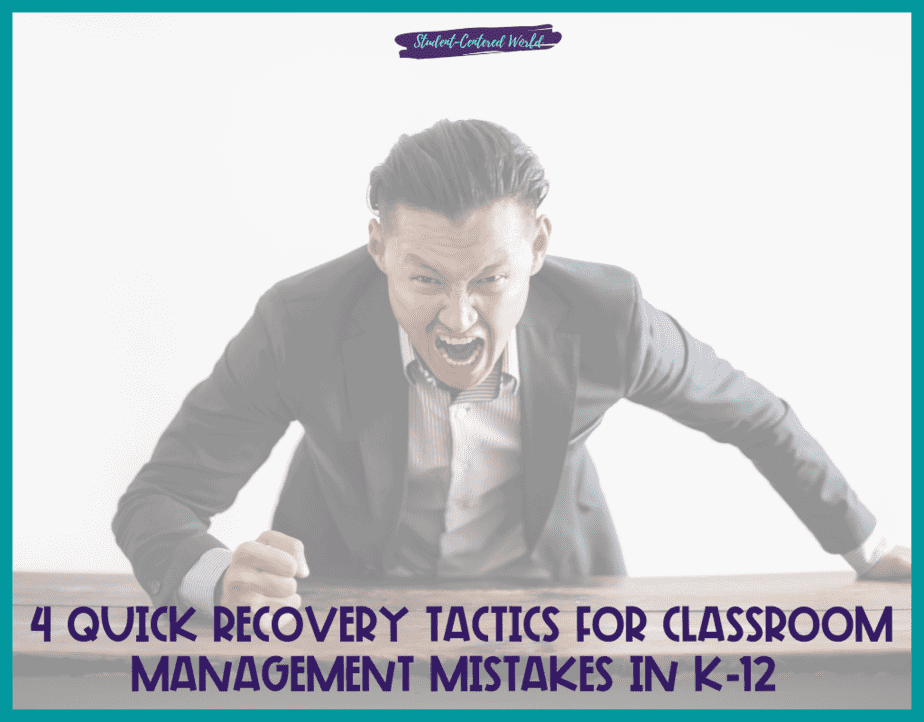
How Not To React When Classroom Management Mistakes Are Made: Coming Down On the Student
We’ve all seen teachers do this before. You know what I’m talking about…the teacher who storms over to a student’s desk is visibly frustrated (or maybe livid), and starts lecturing the student on how disappointed they are.
The likelihood of this type of reaction helping to prevent misbehavior in the future is very low. And oftentimes kids can feel criticized or attacked by their teacher’s anger which only makes matters worse.
Of course, if a student is repeatedly misbehaving every time you turn around, then it may be beneficial for that student to have a 1:1 lesson where they can receive direct instruction from you. However, these 1:1 lessons should always be positive and constructive so as to avoid the embarrassment of public reprimands.
There is a fine line between constructive criticism and unproductive criticism. As a teacher, it’s easy to fall into the trap of unproductive criticism because we are frustrated or annoyed by our students’ behavior. But we need to make sure our critiques and conversations with students are productive and supportive, and not damaging or discouraging.
Recovering from a Classroom Management Mistake
Teachers who can respond to classroom management mistakes with a quick recovery and do not allow it to negatively impact the rest of their day are teachers who have mastered classroom management skills. It takes practice, so don’t feel bad if you’re struggling…just know that you’ll get there with time and effort! In the meantime, check out these 4 steps to help you effectively recover from any classroom management mistakes that could happen!
Take a Deep Breath
It sounds silly, but we recommend taking a few deep breaths before your next move. This will help stop the flow of adrenaline and get you back in control of your emotions. Give Yourself Time to Exhale – Once you’ve taken a moment to exhale and regroup, we recommend giving yourself another minute or two to continue processing what just happened. This will not only give you more time to regain control but will help students feel like they’ve been heard.
Acknowledge the Transgression
Don’t be afraid to acknowledge the transgression that took place in front of your class. You can say something like, “I realize that ___ intruder interrupted our discussion of…” or “I understand you all are frustrated by ____ distraction, but please remember we are moving forward.” This will give students permission to express themselves and make them feel like they’ve been heard.
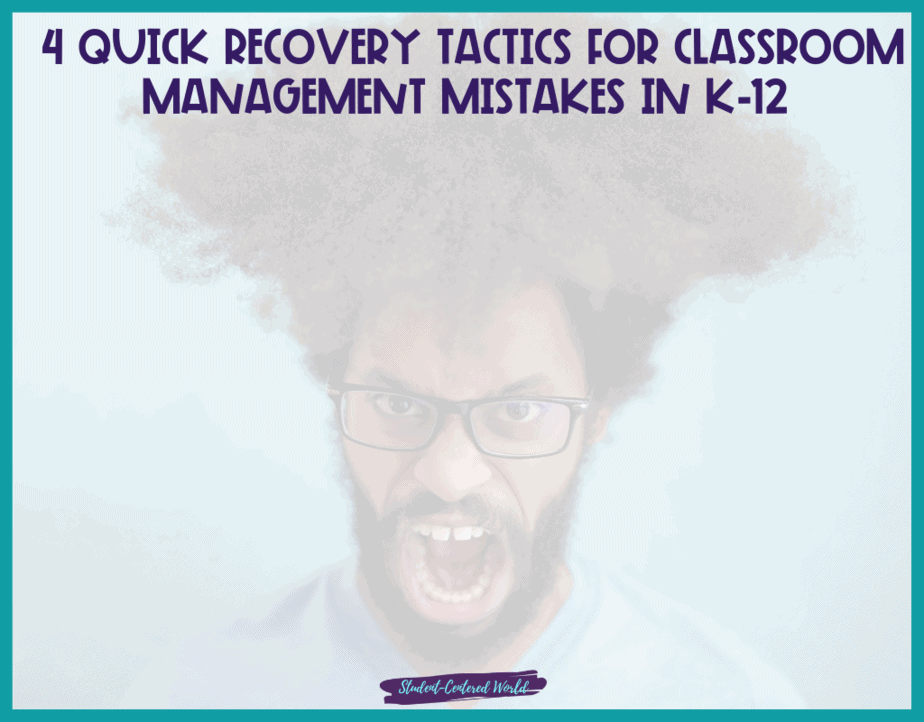
Set Boundaries & Promise They’re Only Temporary
Once you’ve acknowledged the behavior that just took place in your classroom, we suggest setting firm boundaries and promising them they will only last for a specific amount of time. This gives students an expectation and helps ease their anxiety about what is to come. An example of this could be, “We are ONLY going to discuss this for 3 minutes and then we will move on. I promise you we will return to this tomorrow.” After you set your boundaries and promise them they’re only temporary, we recommend spending the remainder of your time focusing on what’s important: teaching!
Keep Your Word
One of the best things a teacher can do when setting boundaries is keeping their word! When you make a promise to your students, whether it’s during a fire drill or after class is interrupted, make sure you follow through. If your promise was to finish reviewing for an upcoming test tomorrow, tell them you will instead do so on Friday! Your students will be grateful that their teacher is following through with what they said and it’ll give them the reassurance needed to trust you in the future.
Always Remember…
Never forget that when you set your boundaries and promise consequences for their behavior, it is because you genuinely care about the success of each individual student in your class. If students know you’re doing what’s best for them, they won’t take it personally!
Children need choice and boundaries. If you can find that balance, your classroom will thrive.
Snags in the classroom will happen. You will have days where it feels like a circus. Some days, your plan will go off the rails. But don’t give up! You got this.
Stop Driving the Teacher Struggle Bus
Are you struggling with student engagement, apathy, or keeping your class on track?
💫💫 There’s hope! 💫💫
Join my free teacher workshop “Choosing Choice” and in just 60 minutes, you’ll craft a practical plan to revitalize your teaching. Discover the magic of student choice in boosting engagement, gain quick implementation ideas, and explore strategies for year-long success.
Unlike overwhelming workshops, my approach guides you in real-time, providing more classroom options, reducing stress, and giving you more personal time.
Plus, you’ll earn a 1-hour professional development certificate and have 7 days of access.
Don’t miss this chance to transform your teaching; click below to secure your spot now!
